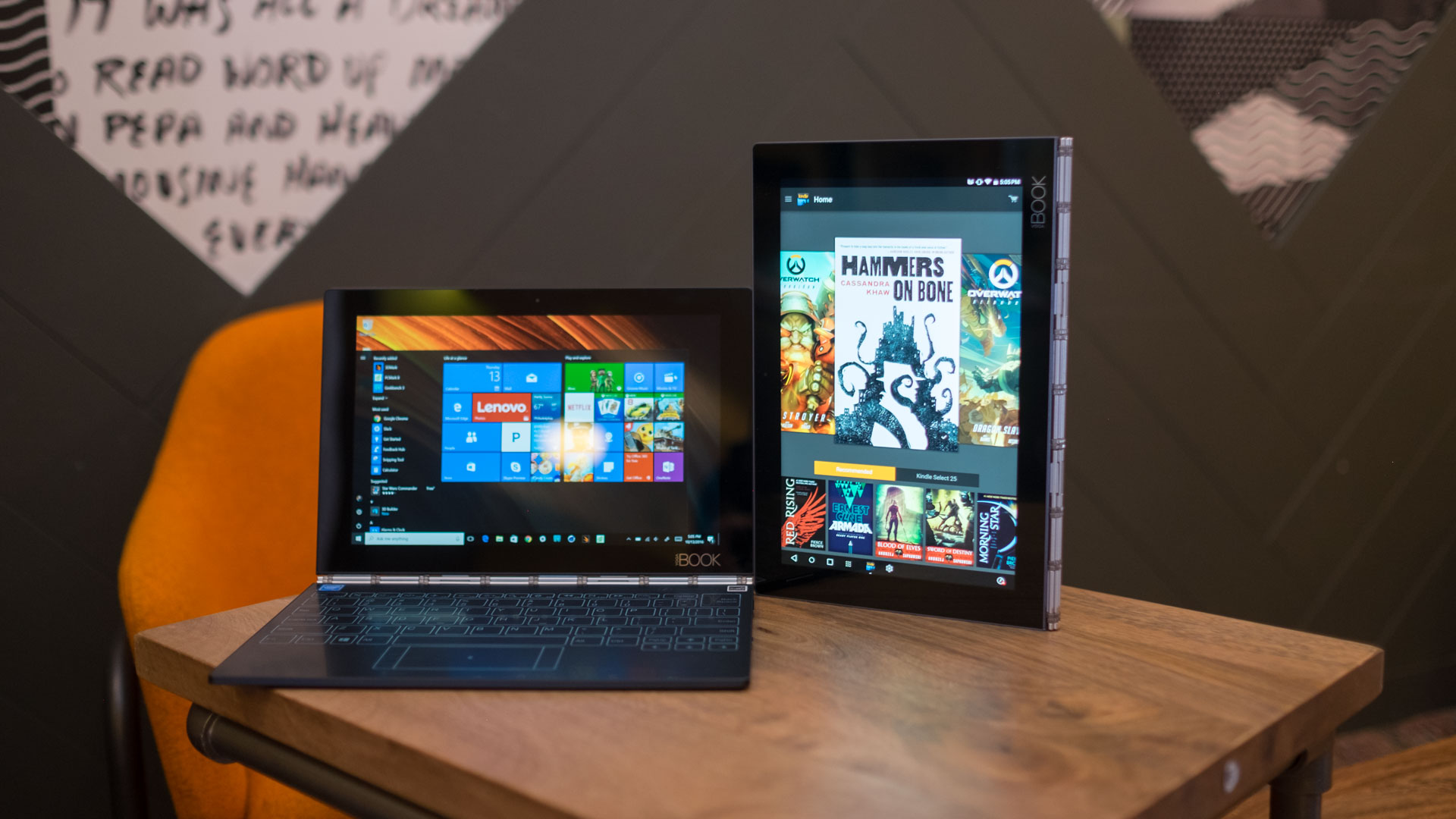Why you can trust TechRadar
The Lenovo Yoga Book is, frankly, one of those devices that’s tough to critique given how different it is. This piece of hardware could very well become an entirely new subcategory within laptops and tablets – devices that bridge the gap between both in ways that today’s 2-in-1 laptops simply can’t.
Yet, the power profile of this first go sets certain expectations for what such devices are and should be capable of. That’s why we look at the Yoga Book as the first of what we’re calling the netbook of the future. The ultra netbook, perhaps.
Lightweight and low-power, netbooks came at a time just before the ubiquity of tablets and were quickly outpaced by them as the – literally and figuratively – de facto lightweight devices to get through email, write up brief documents and have some fun creating or gaming along the way. But tablets could never offer the screen real-estate that netbooks did while typing short of a Bluetooth keyboard.
Now, with the Yoga Book, it seems as if we’ve come full circle with a device that offers the functionality of both a netbook and a tablet in one beautiful package. However, we’re hoping that Lenovo’s second attempt at this can offer a bit more power.
We liked
The Yoga Book’s versatility is unmatched in both the laptop and tablet worlds combined – in that it actually collides the two. Full-on touch laptop keyboards are something we in the TechRadar office used to joke about when seeing devices like the 2014 ThinkPad X1 Carbon’s row of adaptive function keys. Now, with the Halo Keyboard, we’re amazed at how accurate we are typing on it, even without any sort of auto-correct software on the Windows 10 version.
Plus, getting a Wacom digitizer and stylus attached to a plenty-sharp screen – that can digitize and back up ink-to-paper scrawling no less – for the price of an iPad is immense value. Throw in that it can handle your (albeit terribly basic) computing tasks like a laptop can, and that value only grows.
We disliked
There isn’t a lot that we outright don’t like about the Yoga Book, but there are downsides which detract from an otherwise potentially revolutionary device. For one, it appears to us that Intel’s Atom chip is holding the Yoga Book back from its true potential. Perhaps upping the screen size to 12-inches next time would allow enough room for a more powerful Intel Core M series chip.
Second is that, with no analog keyboard hardware inside and the timing of its release, we’d expect to see such a groundbreaking device use the latest in connectivity: USB-C. Instead, we’re stuck with a port standard that is inferior in every way: microUSB. From slower data transfer speeds to woefully long charge times, microUSB only stands to hold the Yoga Book back from rewriting the book on 2-in-1 computing devices.
Final verdict
If it weren’t for the underpowered processor inside and dated connectivity solution holding it back, we would outright say that the Yoga Book is both the Android and Windows 10 tablet to beat. And, for folks in the art world, we very well might say that anyway.
The Yoga Book bridges the gap between tablet and laptop in ways that we, frankly, didn’t expect for a much longer time – if at all. The fact that we can type accurately on the Yoga Book’s Halo Keyboard, even without auto-correct software helping us, is testament to both Lenovo’s hardware and software engineering and our growing acuity with such input methods over the past decade.
Whether you buy the Yoga Book right now is a horribly difficult question to answer, as we want to see it succeed for the future of what could be an entirely new subcategory of devices.
But, unless you’re a burgeoning digital artist looking for an all-in-one Wacom device, we’d say wait for a hopeful ‘Version 2.0’ with stronger components that would make more sense for all of us to get on board with.
Joe Osborne is the Senior Technology Editor at Insider Inc. His role is to leads the technology coverage team for the Business Insider Shopping team, facilitating expert reviews, comprehensive buying guides, snap deals news and more. Previously, Joe was TechRadar's US computing editor, leading reviews of everything from gaming PCs to internal components and accessories. In his spare time, Joe is a renowned Dungeons and Dragons dungeon master – and arguably the nicest man in tech.

